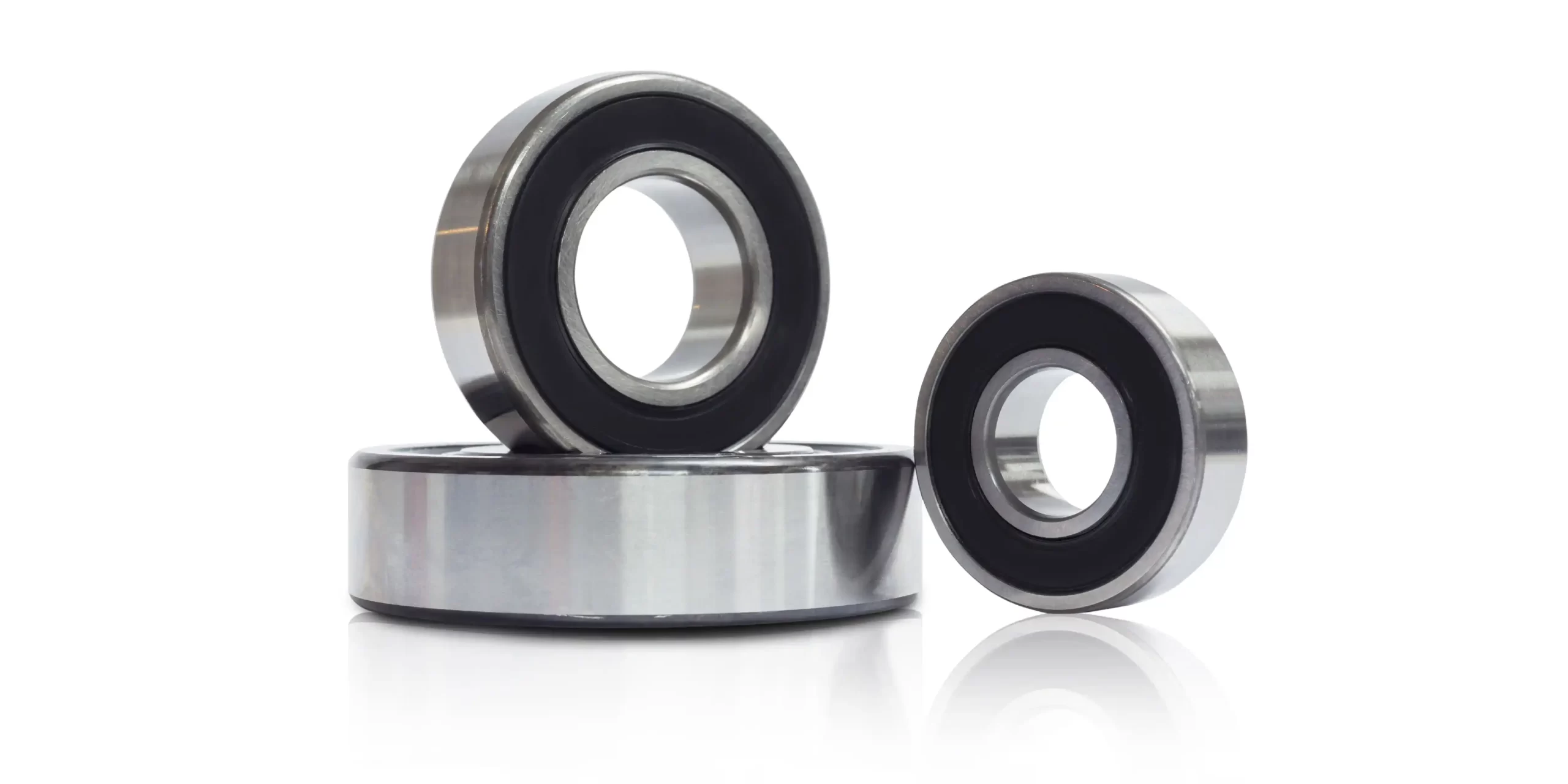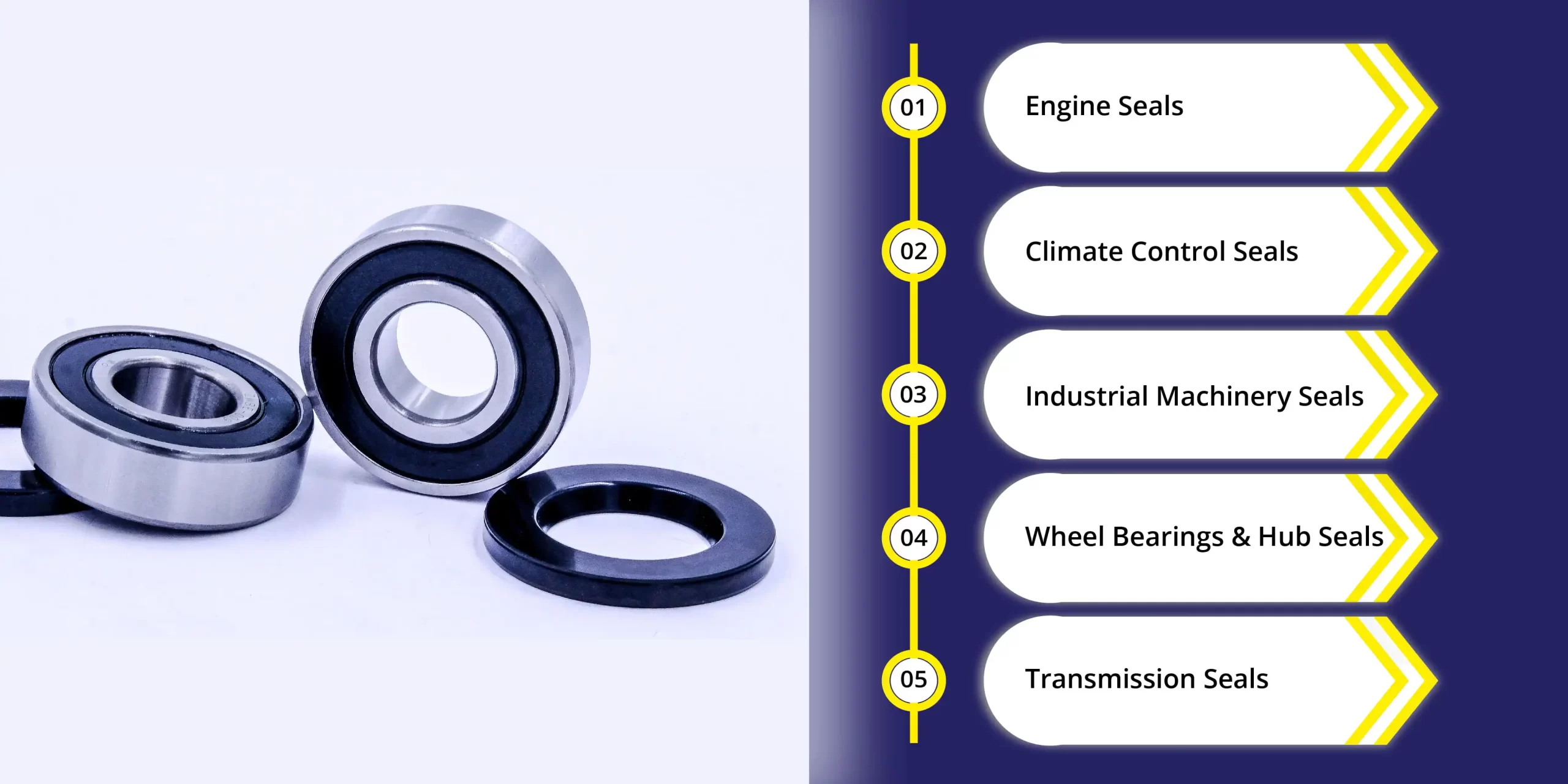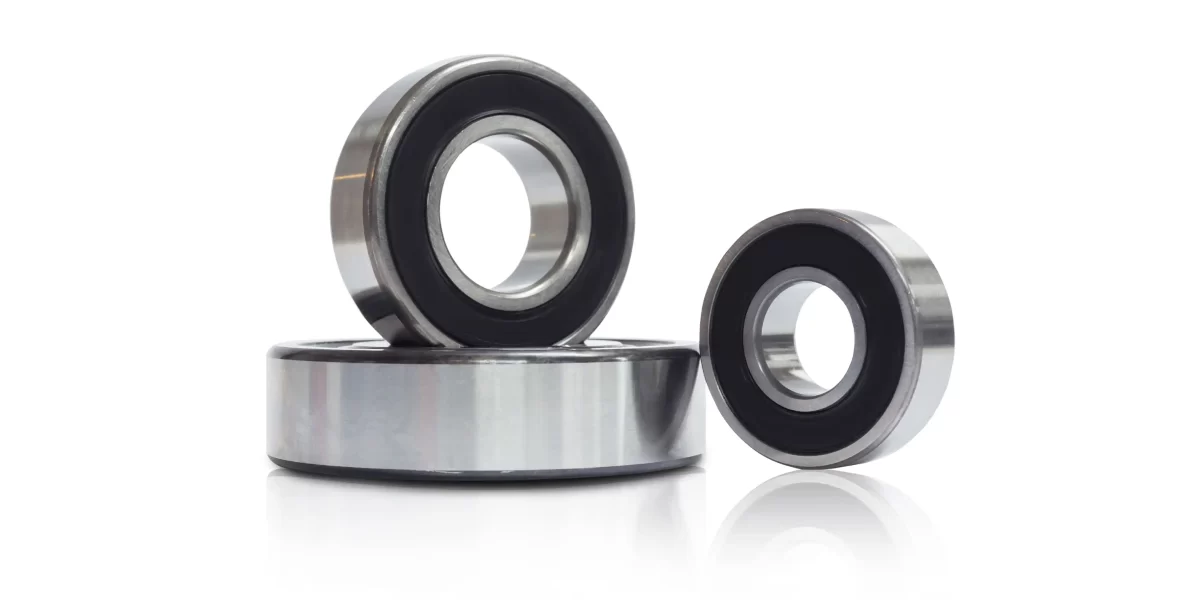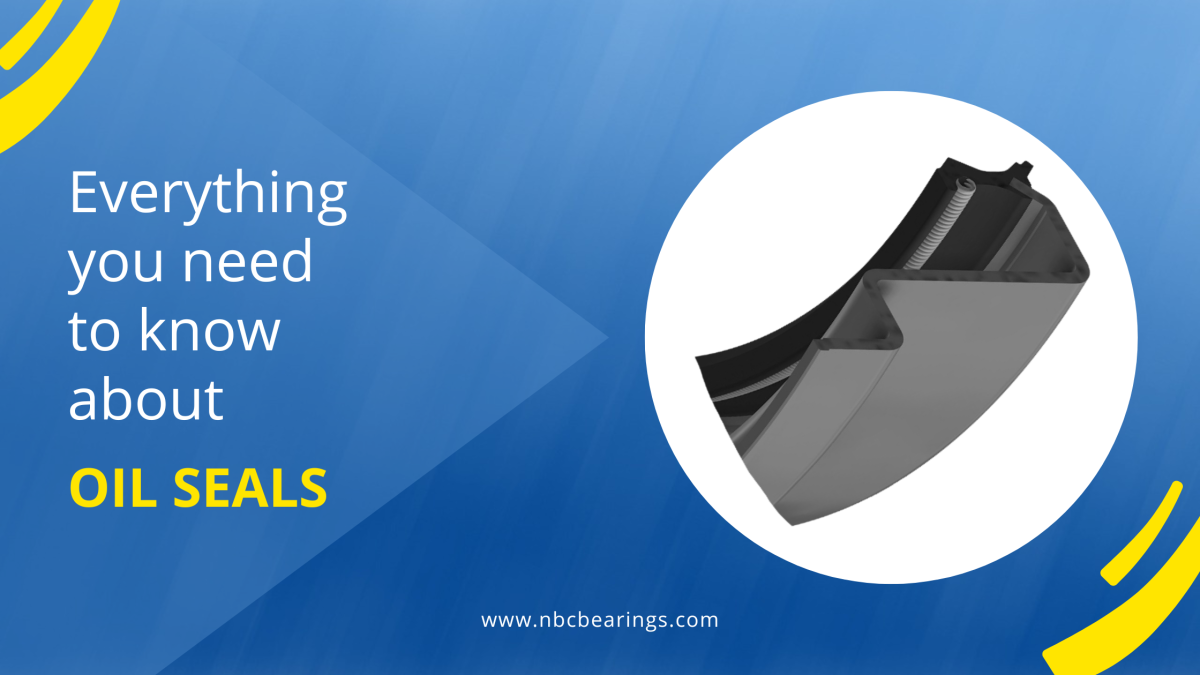Sealing technology plays a pivotal role in maintaining the reliability and productivity of automotive and industrial systems. From engines to industrial machinery, the choice of sealing technology can significantly impact performance, efficiency, and longevity.

What Does Sealing Technology Involve?
Sealing technology involves the design, manufacturing, and application of seals to prevent the leakage of fluids or contaminants in mechanical systems. These seals are essential for maintaining proper functioning and efficiency while protecting sensitive components from damage or corrosion.
What are the Different Types of Sealing Technology?
Engine Seals:
Engine seals are crucial for preventing the leakage of oil, coolant, and other fluids in automotive engines. These help in
- maintaining engine efficiency,
- reducing emissions, and
- prolonging the lifespan of critical components.
Choosing high-quality engine seals that can withstand the heat and pressure of combustion chambers is essential for optimal engine performance and reliability.
Transmission Seals:
Transmission seals are responsible for containing transmission fluid and preventing leaks in automotive transmissions. They play a crucial role in:
- ensuring smooth gear shifts,
- reducing friction, and
- preventing premature wear of transmission components.
Selecting transmission seals with excellent sealing properties and durability is essential for maintaining transmission efficiency and reliability.
Wheel Bearings and Hub Seals:
Wheel bearings and hub seals are essential components in automotive wheel assemblies, providing support and protection against contamination and moisture ingress. Properly sealed wheel bearings and hub seals help
- maintain vehicle stability
- steer responsiveness, and
- overall safety.
Choosing high-quality seals with effective sealing properties and resistance to harsh road conditions is essential for ensuring long-lasting performance and reliability.

Climate Control Seals:
Climate control seals are used in automotive HVAC (Heating, Ventilation, and Air Conditioning) systems to prevent the leakage of refrigerant and ensure efficient cooling or heating. These seals play a vital role in
- maintaining cabin comfort,
- ensuring consistent air quality, and
- energy efficiency.
Selecting climate control seals with superior sealing properties and resistance to temperature extremes is crucial for optimal HVAC system performance and reliability.
Industrial Machinery Seals:
In industrial sectors, sealing technology is essential for preventing leaks, contamination, and downtime in various machinery and equipment. Seals used in pumps, compressors, hydraulic systems, and other industrial applications must withstand high pressures, temperatures, and chemical exposure.
How to select the right sealing technology?
Choosing the right sealing technology tailored to specific industrial requirements is essential for maximizing productivity, efficiency, and profitability.
One of the critical factors in selecting the right sealing technology is its ability to withstand extreme temperatures and pressures. Automotive and industrial systems often operate in harsh environments where temperature fluctuations and high pressures are common. Seals must be designed and engineered to withstand these conditions to ensure reliable performance and prevent costly downtime.
It’s essential to work with trusted suppliers and manufacturers who offer a wide range of sealing solutions tailored to automotive and industrial needs. Conducting thorough testing and evaluation of seals in real-world conditions can help ensure optimal performance and reliability in the long run.
FAQ's
What are the methods of bearing sealing?
Bearing sealing methods include labyrinth seals, contact seals, and non-contact seals. Labyrinth seals use a series of grooves and ridges to create a tortuous path for contaminants, while contact seals utilize lip seals or rubber seals to physically block fluid ingress. Non-contact seals, such as shields or covers, provide a barrier without direct contact with the bearing surfaces.
What type of seal is used for bearings?
The type of seal used for bearings depends on the application requirements and operating conditions. Common types of seals include lip seals, labyrinth seals, rubber seals, and metal shields. Lip seals are commonly used for moderate-speed applications, while labyrinth seals are preferred for high-speed and high-temperature environments.
How are bearings sealed?
Bearings can be sealed using various methods, including integral seals, shielded bearings, and sealed bearings. Integral seals are integrated into the bearing design during manufacturing, while shielded bearings use metal shields to protect against contaminants. Sealed bearings feature rubber or synthetic seals that provide superior protection against moisture, dust, and other contaminants.
What is a bearing seal?
A bearing seal is a device or component used to prevent the leakage of lubricants and contaminants in a bearing assembly. It serves to protect the bearing from external elements such as moisture, dust, dirt, and debris, while retaining lubrication to ensure smooth operation and extended lifespan.
Why is PTFE used in bearings?
PTFE (Polytetrafluoroethylene) is commonly used in bearings due to its exceptional properties, including low friction, high temperature resistance, chemical inertness, and non-stick properties. PTFE coatings or seals reduce friction between moving components, improve wear resistance, and enhance the overall performance and longevity of bearings.
What is the use of PTFE in bearings?
PTFE is used in bearings to reduce friction, improve wear resistance, and enhance the performance and longevity of mechanical systems. PTFE coatings or seals provide a low-friction surface that minimizes energy loss, reduces heat generation, and extends the service life of bearings in various applications, including automotive, industrial, and aerospace.
What type of grease is in sealed bearings?
Sealed bearings are typically lubricated with high-quality grease specifically formulated for bearing applications. Common types of grease used in sealed bearings include lithium-based grease, synthetic grease, and specialty greases with additives for enhanced performance and protection against wear, corrosion, and extreme temperatures.
Do bearings need seals?
Seals are essential for protecting bearings from contaminants and retaining lubrication to ensure smooth operation and extended lifespan. While some bearings may be designed with integral seals or shields, additional external seals may be required to provide extra protection against harsh operating conditions, such as high temperatures, moisture, dust, and debris. Proper sealing is crucial for maximizing bearing performance, reliability, and longevity in automotive and industrial applications.











